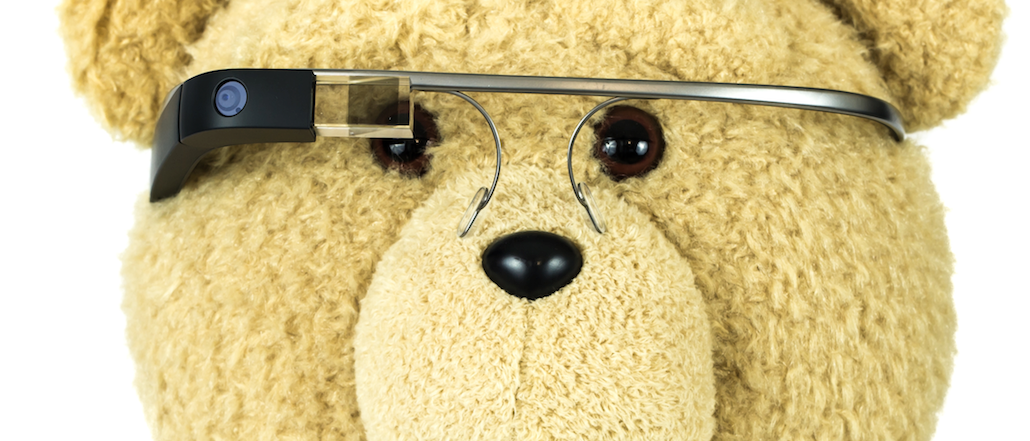
Karl Woolley is creative technologist at Oscar-winning creative solutions partner, Framestore
The term “fast-paced innovation” feels like an overused cliché, but there’s simply no other way to describe what’s going on in the world of augmented reality (AR).
Just halfway through 2015, the year has already witnessed several significant AR milestones. January saw the launch of Microsoft’s HoloLens (“sci-fi glasses that make you see you holograms”). In February, Sony announced developer pre-ordering for its SmartEyeglass. Then April was rife with rumors that Google Glass will be resurrected. And uber-geeks like me are itching for more information about Magic Leap — a more enigmatic and creative venture into AR, largely backed by Google — which has just announced it’s accepting registrations for developer kits.
If you think AR means waving a Blippar-style app over a magazine cover, you need to keep up. This new wave of AR, relies on wearable tech that convincingly layers digital objects into our immediate real-world surroundings. Where the original definition of AR basically boiled down into animating a character on a magazine cover, AR 2.0 proposes something far more electrifying by physically integrating magical elements into real lives.
The original AR 2.0 device, Google Glass, has been much derided. It failed because it was ahead of its time. But the new version of Google Glass could shake off its “glasshole” reputation. Why? Because the way we’ve enthusiastically embraced virtual reality — VR differs from AR by completely immersing users and divorcing them from the real world — suggests we’re now more psychologically ready for AR. At least, Microsoft, Sony and Google certainly seem to think so. And if it’s good enough for them…
Ad position: web_incontent_pos1
But what’s in it for marketers? So far, predictions around brand use of AR remain largely prosaic. The most obvious way to exploit AR in a marketing context is to let consumers see what a product looks like in their home before they commit to buying; a whole new definition of “try before you buy.” Want a new sofa? Use HoloLens or its ilk to see what it looks like in your living before opening your wallet.
This very practical use is where wearable AR is heading now. The launch marketing around HoloLens and SmartEyeglass tended toward utilitarian function: want a tap fixed but can’t get a plumber on-site? Get expert tuition through your HoloLens! Similarly, Virgin Atlantic is set to use Smart Eyeglass to live stream fix-it video tutorials.
All credit to tech solving a practical need. If AR can aid air travel safety, why not? But what gets me going is AR’s more creative potential. In sharp contrast to the noise around HoloLens and Smart Eyeglass, Magic Leap’s launch campaign involved someone holding a tiny dancing elephant in their hand. This is where AR 2.0 gets dramatically more interesting.
Ad position: web_incontent_pos2

Parallels can be drawn here with the recent VR renaissance. In the early days of VR’s rebirth (a mere two years ago), its dramatic improvement was originally built with the gaming community in mind. But I have yet to find a killer VR gaming application. Instead, VR innovation is coming from marketers and creatives who are using this new tech to engage experientially, a smart move when experience is starting to hold more currency than possessions.
Who knew that brands would become the real pioneers behind game-changing tech like VR? And what’s to stop marketers from becoming the main creative trailblazers behind AR 2.0? It’s still too early to predict exactly how brands will use this new wave of wearables-based AR. But what is certain is that, by introducing magical elements into people’s physical offline lives, it gives us a whole new frontier with which we can wow consumers. If Magic Leap can make a baby elephant dance in your hand, unparalleled creative engagement is there for the taking. Are you brave enough to take the first leap?
More in Marketing

In the marketing world, anime is following in the footsteps of gaming
As marketers look to take advantage of anime’s entry into the zeitgeist, they might be wise to observe the parallels between the evolution of anime as a marketing channel and the ways brands have learned to better leverage gaming in recent years.

With the introduction of video ads and e-commerce, Roblox looks to attain platform status
Roblox is expanding into more areas than just ads in 2024. Much like platforms such as Amazon and Facebook have transcended their origins to evolve from their origins as online marketplaces and social media channels, Roblox is in the midst of a transformation into a platform for all elements of users’ virtual lives.

PepsiCo wants to remain a ‘driver of culture’ as it turns to influencers and activations amid rebrand
The soda-maker says it can translate cultural relevance into sales volume.
Ad position: web_bfu